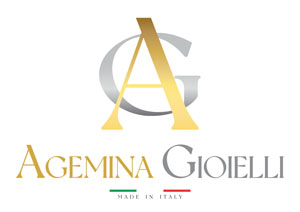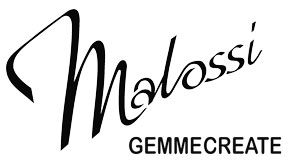In February 1993, Douros synthetic rubies were presented at the Jewelry Fair in Athens along with the jewellery Greek magazine Chrysotechni. They were named after two brothers, John and Angelo, a physicist and an electro technical engineer, specialised in refining precious metals. Using the two furnaces in their company at Piraeus, they experimented with chemical compositions, levels of temperature and times of growth until they created a flux synthetic ruby with a spontaneous nucleation that is now in the history of gemmology; refraction index, density, absorption spectrum, fluorescence and dicroism: all physical properties identical to those evidenced by the natural ruby.

John and Angelo
I met them for the first time in 1996 and our relationship evolved from a purely commercial one to a true friendship. This favoured an exchange of scientific news in the field that we three shared: the immense and unrestrainable passion for synthetic gems.
John was dynamic and intuitive, while Angelo was methodical and reflective: a perfect pair that, in complete harmony, could “feel” the chemical and physical processes taking place in the darkness of the graphite crucible. They had a natural talent for scientific experiments and listening to them talking of synthesis processes was a truly fascinating experience. As it was their story, inextricably linked to their rubies.
The production of Douros synthetic rubies started in 1993/94 reaching about 2,000 ct a month of raw material, from which about 300 ct of faceted material could be obtained; these gems were not greater than 8 ct, characterised by varying levels of quality and purity – however always well included – of an often dark purplish blue colour. The cost was not high due to the quality that was lower than contemporary productions, such as Ramaura and Chatham synthetic rubies.
In any case, they represented a novelty in the landscape of synthetic gems and had quite a success; then, in the two following year, the marketing decreased: actually, not even I had a great success in selling their rubies: the colour characterised by a too dark red and the excessively evident inclusions did not meet the taste of Italian consumers.
Even the production was not steady: John Douros told me with a disarming simplicity that, sometimes, the industrial power supply in Piraeus went out for some hours and so the growing process was interrupted, frustrating even weeks of work. Then, in 2002, the turning point.

Carrol and Tom
Tom Chatham was Carrol’s son, a well-known manufacturer of gems that were named after him: he created the first flux emeralds in 1938 in his laboratory in San Francisco, followed by the production of synthetic corundums (rubies, sapphires and padparachas). The Verneuil method, at that time the only one available, did not allow to produce also emeralds, as the aluminium silicate and beryl, coloured with chrome, did not melted together all the elements composing the synthesis: some evaporated before the others were melted. Chatham found an ingenious solution: a solvent – called “flux” – consisting in a combination of chemical substances endowed with the property of maintaining the liquid condition at very high temperature, without evaporation (lithium oxide, Molybdenum oxide and Vanadium oxide, each creator found their own secret formula): then a melted, stable and controlled mixture, able to melt all components together and make the crystal grow from a seed or for spontaneous nucleation.
In the US they had a good commercial success and Chatham Company remarkably grew becoming a leading player on the market of luxury synthesis; Carrol was not only an excellent scientist, but was also able to sell himself. His synthetic gems, then, had a very good quality, perfect as for transparency, cutting colour and with a wide range of shapes and sizes.
When Carrol died in 1983, his son Tom took over in the running of the company; he strengthened and enlarged it, showing great managerial skills. He had no chance to foresee the 7.1 earthquake that, in 1989, destroyed San Francisco bay along with the Chatham manufacturing laboratory.
Tom had neither the same passion nor the scientific capacity of his father, but he was undoubtedly a marketing genius and, instead of building back his laboratories he chose another path. He contacted the best manufacturers of synthetic gems in the world, attended to the quality of their products, including colour, cutting, cleaning, clarity that remained unequalled. And he gave them his name. Chatham was now very famous in the US and in the world. His products were unique. He continued to call them “Chatham” and they are still unique.
Appearance under the microscope
The following can be found:
- frequent inclusion-free areas,
- typical veils originating from tiny drops of flux, that are generally encountered in other synthetic rubies created through the flux method,
- rounded and elongated cavities with residues of yellow flux,
- bubble inclusions of flux residues resembling biphasic inclusions,
- flux inclusions irregularly oriented according to the crystallographic appearance,
- “interconnected channel” veils, similar to those of natural rubies treated with borax.
Under an optical and a microscopic examination, the characteristics of the less included areas of the crystal can be easily mistaken with those of natural rubies. In order to assess their synthetic nature, more accurate exams are required.





The appearance of rough material


In the picture, first generation Douros (rhombohedral).

In the picture, first generation Douros (geminated Tabular).



Exam of DourChat rough material


The traces of flux externally found on the crystals are white and not yellowish like in the early Douros, this means that its composition has been modified and they probably don’t belong to the lead compounds. (Photo: Alberto Malossi)

The reason why the spontaneous nucleation is replaced by insemination resides in the fact that by the insemination method the growth time is considerably reduced as well as the temperatures, allowing a remarkable save in equipment and, above all, of energy costs. In immersion the rough crystals appear transparent towards the external surface and more included internally. Some inclusions of flux, parallel to the rhombohedral face of the crystal, could indicate an initial development of tabular laminae that then come together in a different crystalline building. While carefully examining them, in some cases the crystal seed can be observed and, due to its higher melting point, as usually happens in others synthesis, does not dissolve in the molten mass of the fluxes. (Photo: Alberto Malossi)






The turning point
Then, Chatham needed experts who could “grow” gems, possibly with their own laboratory at low prices and the Douros needed economic power to continue their production: this is how a perfect partnership was born. The Douros worked exclusively and very discretely for Chatham, creating synthetic rubies in their laboratory at Piraeus. John told it to me, and my collection was enriched with some rubies created just in this period.
However, the collaboration between them was not limited to a growth by proxy, as Tom Chatham knew his father’s secrets that he shared with the Douros: an exchange of scientific information that modified not only the colour, but also the crystal appearance of the rubies produced by the two brothers: a new generation of Douros was born (I will call them “DourChat” for short).
The brothers Douros continued to manufacture raw crystals of rubies for Chatham up to about 2007, then their partnership came to an end. Chatham turned to other Russian and Chinese manufacturers.
Happy ending
However, the story of Douros did not end as their expertise and experience of “crystal growers” enriched by the partnership with Chatham was unique; in the meantime, in fact, also Ramaura by Judy Osmer closed and no one now manufactured ruby crystals with the flux method. The new chapter of their story had in store some new surprises: first of all the idea of coating big fragments of
Verneuil ruby boule with a layer of a ruby created with the flux method whose thickness was equal to some millimetres. Little by little such layer overgrew on it (coated); during the process, the base of Verneuil ruby underwent a thermal heating that widened the microcracks already present and created new ones that were then filled by the growing corundum and flux. The result? Synthetic rubies of big dimensions, characterised by an excellent colour and outstanding very “natural” inclusions, at very reasonable prices. A technique that, at that time, was innovative and unique and immediately entered the market in Thailand from which it spread all over the world.
Very few know that the brothers Douros were the first to create corundums with thermally induced inclusions through cracks (thermal cracking) in a very natural way.
Before that in Thailand rubies, sapphires and other synthetic corundums where “cracked” in a very rough way, heated, immersed into oil and then filled with borax glass or other element; the results were very bad, often stones broke leading to a remarkable waste of material; their appearance was often opaque and not very appealing with very rough and unnatural internal crackings.
For short I will call this last creation by the brothers Douros “DourCoat” and I will analyse, one by one, the three types of rubies that made their and also our history.
The appearance of the cut gems
In conclusion the appearance of the inclusions of the DourChat show the following features:
- flux veils similar to those visible in heat treated natural rubies and in borax treated rubies;
- rounded cavities with elongated bubbles similar to biphasic inclusions;
- rugged “lace”, “writing” and polygonal inclusions of interconnected channels similar to those of treated natural rubies;
- parallel flux traces.

The inclusions are typical and in some respects different from the other synthetic rubies created by the flux method: therefore it is possible to identify them with certainty.
The traces of flux inside the crystal are organized in complex drawings that reflect the crystal growth morphology, visible in the following photos. (Photo: Alberto Malossi)







The Coated Douros
The technique of coating natural or synthetic gems with the most disparate treatments and materials using both a hot and cold procedures has been known since ancient times. However, the first true technologically advanced was carried out in the ‘60s by Lechleitner, an Austrian who managed to grow, with the hydro-thermal method, a thin film of synthetic emerald on the surface of a natural, nearly colourless beryl. We have no news, though, of synthetic rubies coated with another synthetic ruby produced in high quantity for a commercial purpose up to 2007, the year when their manufacturing by the brothers Douros started.
The other “growers” of synthetic items did not conceive the idea that a synthetic gem could be coated with another synthetic one: their mission was to mimic and exceed nature, creating perfect gems, without subsequent adjustments. But the brothers Douros didn’t share this idea and so they reverse the principle of flux seeding: not a small seed of Verneuil synthetic ruby on which the crystal construction of another synthetic ruby developed, but a big fragment of Verneuil on which a more or less subtle layer of synthetic ruby with the flux method grew.
The process of controlled annealing allowed to create gems with excellent characteristics of brightness, colour and inclusions very similar to the natural ones, adjusting the unpleasant glassy appearance free from inclusions of Verneuil Rubies. It was basically a process of valorisation of an already existing synthesis with the aid of changes appreciated by the market.
According to the explanations by John Douros – to be believed – the annealing was not an easy task, as Verneuil synthetic rubies, as it is known, are mono-crystals with deep inner tensions and microcrackings caused by the rapid growth and from the difference in thermal gradient between the formation head and the rest of the crystal. Such conditions make them fragile and responsive to temperature variations; even to the heating with a simple flame can cause the cracking of the crystals in small irregular pieces.
The permanence in the high temperature flux for at least two or three weeks could further damage or degrade the Verneuil mono-crystals. At that time no related studies existed and the brothers Douros, after carrying out numerous experiments, invented an annealing process that “tempered” the Verneuil ruby boules eliminating the inner tensions and, often also, the “curved growing lines”.
The annealing process lasted about a week and consisted in heating the Verneuil boules of synthetic ruby in an electric oven, following a heating and cooling cycle that progressively each time, increased by 10% the minimum and maximum temperature value, until it reached 1300°, stable for at least 48 hours. Then, the powder mixture composing the growth flux was introduced very slowly to start the formation of the crystal coating on the surface of the fragments of the Verneuil ruby boule. Given the dimension of the “seed” the growth was fast, about half millimetre a day.

On the samples in my possessions the coating shows a variable thickness with a 4 mm maximum value. If the process continued for days, so the growth would too, until it took on the appearance of a crystal conglomerate of fragments of boules and new crystals, but this would not prove convenient on the economical point of view as, the greater the coating thickness, the higher, in a scalar way, its formation time and then, the permanence on the oven, with higher costs linked to the power supply, also worsening the appearance.
With the annealing treatment and the subsequent coating, another important phenomenon occurs concerning the microcrackings originating in the formation of Verneuil mono-crystal; these are not to be only seen as crackings, but as dislocations of growth of the boule crystal fabric that create some “hollow areas” with a size equal to some hundreds of nanometres, sometimes visible under the microscope in a radio-opaque agent.
With the process, the microcrackings widen with the plastic relaxation of the crystal structure due to the high temperature originating some types of structures depending on the width of the micro-cracking:
- they connect forming veils that are practically identical to the natural ones.
- they fill with flux originating various visible structures among which interesting hexagonal crystallizations of corundums formed as for capillarity.
- they originate thin more or less wide crackings having “knee”, acute angle, crossed or concoid shapes.
Microscopic examination of rough material



The appearance of the cut gems
A summary of typical inclusions:
- both regular and irregular polygonal crystallization originating from capillary microfractures;
- veils originating from very tiny flux teardrops;
- veils originating from the soldered walls of the crevice;
- knee-like, sharp angled veil in the crevices;
- parallel growth lines of tabular crystals can be mistaken for the lamellar polysinthetic germination typical of natural rubies (a structure rarely encountered in synthetic rubies);
- curved parallel striations typical of Verneuil rubies;
- rounded cavities with elongated bubbles similar to biphasic inclusions.











Conclusion
Brothers John and Angelo Douros undoubtedly represented an important moment in the history of the creation of synthetic rubies.
Their ingenious intuitions and their passion implemented a series of original creation processes along with treatments that are still used today for the realisation of beautiful synthetic rubies employed in jewellery.
DourCoat synthetic rubies were produced in high quantities and are still present on the market of synthetic gems, but the brothers Douros, focused on their usual work, the refining of precious metals, discontinued the production; however they paved the way to some small manufacturers, mainly from Thailand, that understood and improved the thermal treatment process of Verneuil corundums of any colour.

These gems do not undergo a coating, but only a thermal treatment and, sometimes, a light bath in flux, with incredible results as for inclusions: veil inclusions, in fact, are delicate and identical to the natural ones, no knee, crossed or acute angle veils can be seen. Often, even the growing lines typical of the Verneuil synthesis cannot be evidenced. They are synthetic gems very difficult to identify and they can deceive given the appearance of inclusions identical to the natural ones. For a sure identification, further exams carried out with more sophisticated tools are required.
I think that they are the most widespread synthetic rubies.
The pictures and the gemmological materials here reproduced are owned by the author.
References
1987 – Journal of Gemology, Vol. 20, pp.294-305 – On twinning in natural and synthetic flux-grow ruby Schmetzer k.
1993 – Chrysotechni, Vol. 4, No. 45 – Douros J. , Douros A. Cultivared ruby from Greek production.
1993 – JewelSiam, Vol. 4, No. 4, pp 106-114; No 5, p. 16 – New flux –grow synthetic rubies from Greece -Smith C.P., Bosshart G.
1993 – ICA Early Warning Flash, Laboratory alert No 71, June 8, 1993 – Flux synthetic ruby alleged European production – Hanni H.A, Bosshart G.
1994 – Gems & Gemology, Summer 1994, Vol. 30, No. 2 – Sintetic Rubies by Douros: A New Challenge for Gemologists – Peer Reviewed ArticleHenry A. Hänni, Karl, and Heinz-Jürgen Bernhardt
1994 – Journal of Gemology, Vol. 24, pp. 87-93 -Twinning in Ramaura synthetic rubies.– Schmetzer K., Smith C.P., Bosshart G, Medenbach O.
1994 – Jewellery News Asia – September 1994 – How to identify Douros synthetic rubies – Asian institute of gemological sciences.
Article by Alberto Malossi, published on IGR – Italian Gemological Review #4, Summer 2018.
















